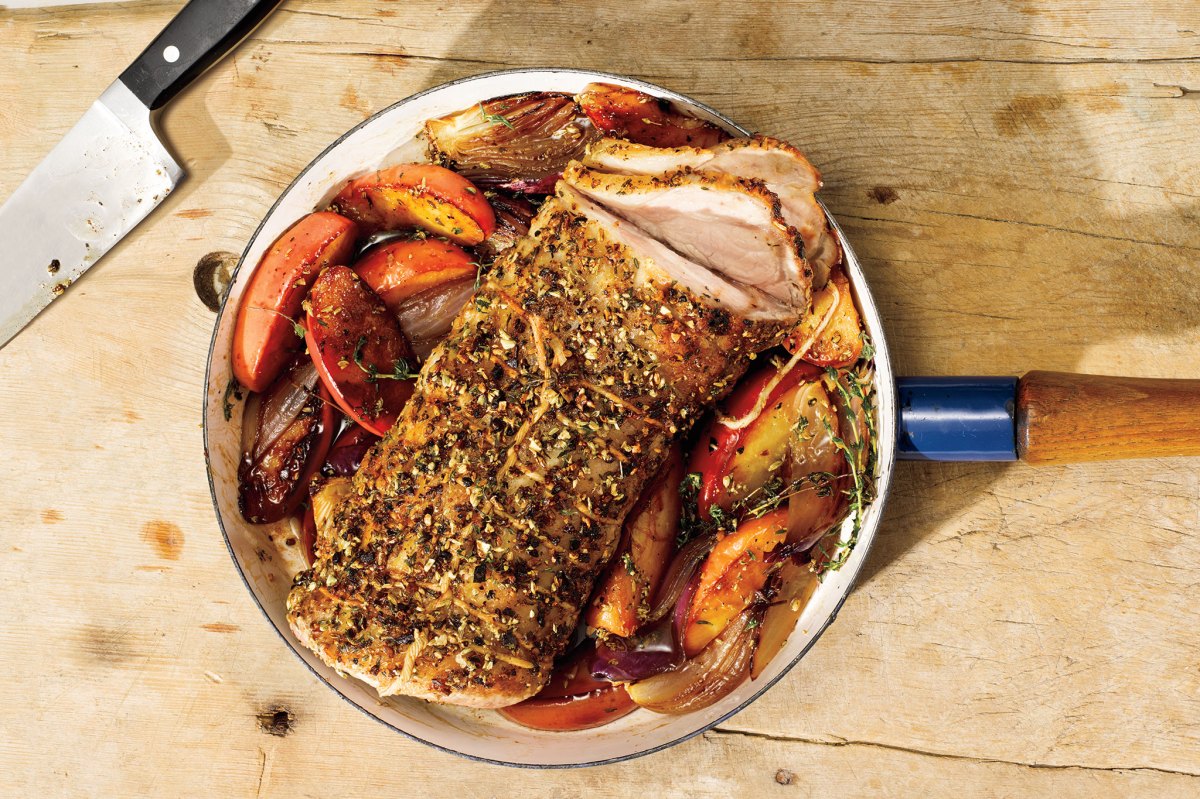
Whether you’re looking to get shredded by summer or simply trying to avoid winter weight gain—you can’t accomplish your goals without a big helping of protein. Science has narrowed in on the optimal amount. Rather than wolfing down a huge amount of protein to build muscle and stay full for longer, researchers are finding it’s best to incorporate a healthy amount throughout the day—roughly 30 grams of protein per meal.
According to Tanya Zuckerbrot MS, RD, a Registered Dietitian in New York City and the Founder of the F-Factor Diet, “Protein is an essential part of our diets because it provides the amino acids that are vital to important life functions.” A balanced diet rich in protein can help keep your immune system strong, encourage muscle growth, and enhance fat burn.
While fitting in (around) 30 grams every time you sit down to eat might sound ambitious, it’s rather easy to bolster a high-protein meal. Here are 30 ways to make it happen. First, some tips on getting 30 grams of protein at every meal.
How to Get 30 Grams of Protein at Every Meal
1. Prepare breakfasts for the week
“Mornings can be rushed and breakfast tends to get skipped. Since breakfast sets the stage for your metabolism for the day it’s important to have an adequate morning meal that contains a protein kick.
Prepare several day’s worth of breakfasts at a time to save time in the mornings. Some easy breakfasts that you can make in advance include egg white muffins or chia seed pudding,” says Zuckerbrot.
2. Keep your fridge and pantry stocked
“You can now order perishable and nonperishable groceries online, so it’s easier than ever to make sure you always have your go-tos on hand like nonfat Greek yogurt (16g protein), hard boiled eggs (premade makes it even easier), chia seeds (are shelf-stable for months and have 6g protein for 2 tablespoons), cold-cut turkey breast, low-fat cottage cheese, dry lentils, nut butters, and more,” says Zuckerbrot.
3. Have cooked, plain quinoa on deck
“Make a big batch in the beginning of the week and enjoy it one day as a side dish to a simply cooked piece of chicken breast, the next day as a salad with veggies and shrimp, and in the last days combine with egg, low-fat cheese, and turkey pepperoni into muffin tins for gluten-free pizza bites! Cooked quinoa will last in your fridge for at least 5 days, and a cup provides you with about 8 grams of protein,” says Zuckerbrot.
4. Carry protein rich snacks on the go
“There are tons of non-perishable high protein snacks you can carry on the go. Keeping a few options on you at all times will ensure you will be snacking wisely and getting extra muscle building protein between meals.
Stash things like beef or turkey jerky (1 oz serving = 9g protein), 100 calorie packs of dry roasted edamame (10g protein), No Cow or Quest Bars (about 20g protein each), or 100 calorie packs of simply protein crunch (10g protein),” says Zuckerbrot.
5. Get to know portion sizes
“Each ounce of animal protein provides about 7g of protein. For a visual cue, 3 ounces is about the size of your palm so aim for a little more than that—again, a deck of cards is the size of 4 oz.
Choose lean animal proteins such as egg whites, all fish, skinless chicken, cold cuts, lean cuts of beef like sirloin and flank, and lean cuts of lamb like chop or roast,” says Zuckerbrot. Understanding portion sizes will make it much easier to whip up a quick, healthy, and balanced meal.
6. Make a list
Not sure what to cook? Well, if our list of protein-rich items still has you pacing around in your kitchen for something to eat, then sit down and make your own.
Pick and choose which protein-packed items you enjoy eating, can cook in bulk, and commit to them by listing them out.
This will not only help you avoid unhealthy impulse purchases at the store, but can help you plan out your meals for the week ahead, keeping you on track to reach your health goals and hitting 30 grams of protein at every meal.
Comments are closed.